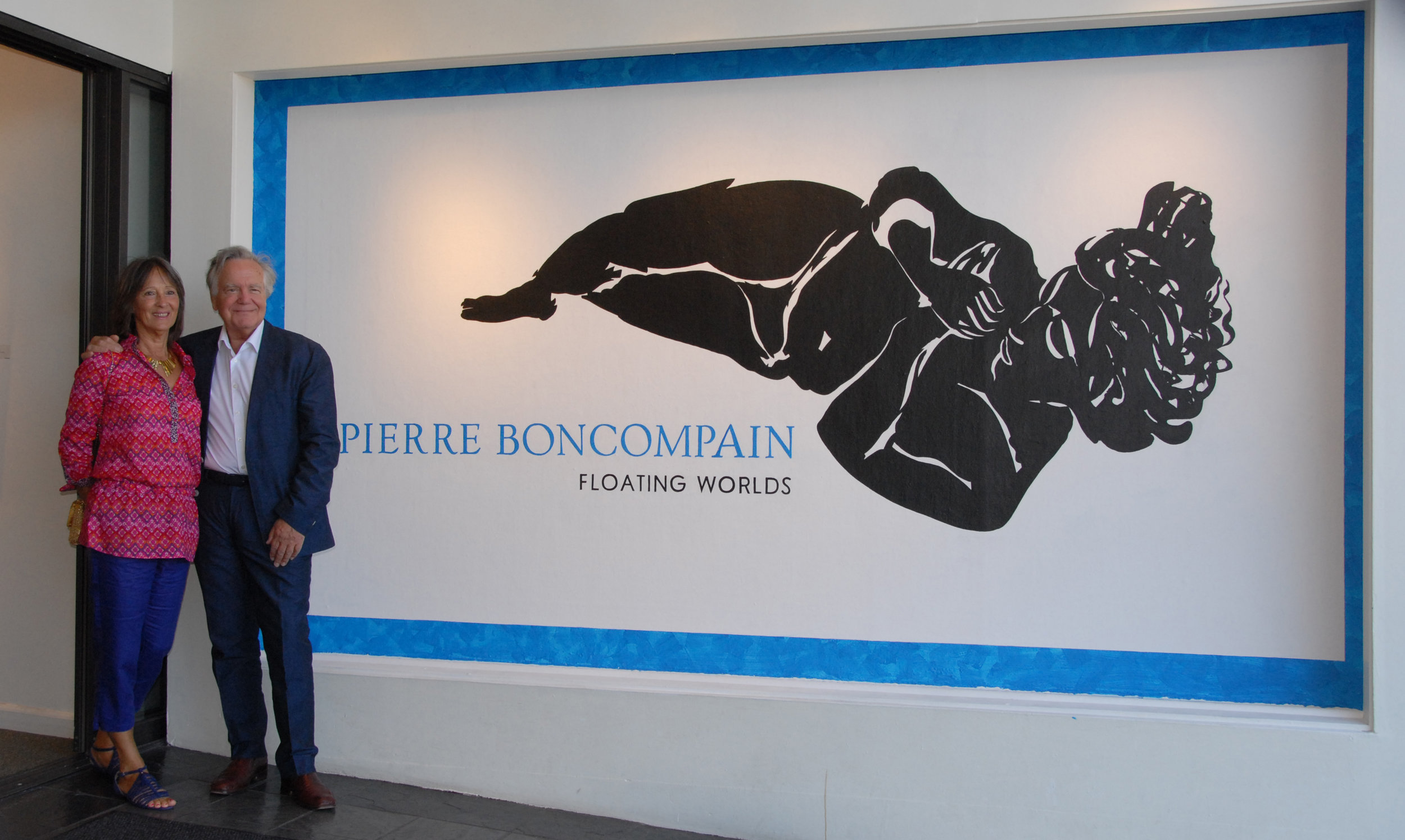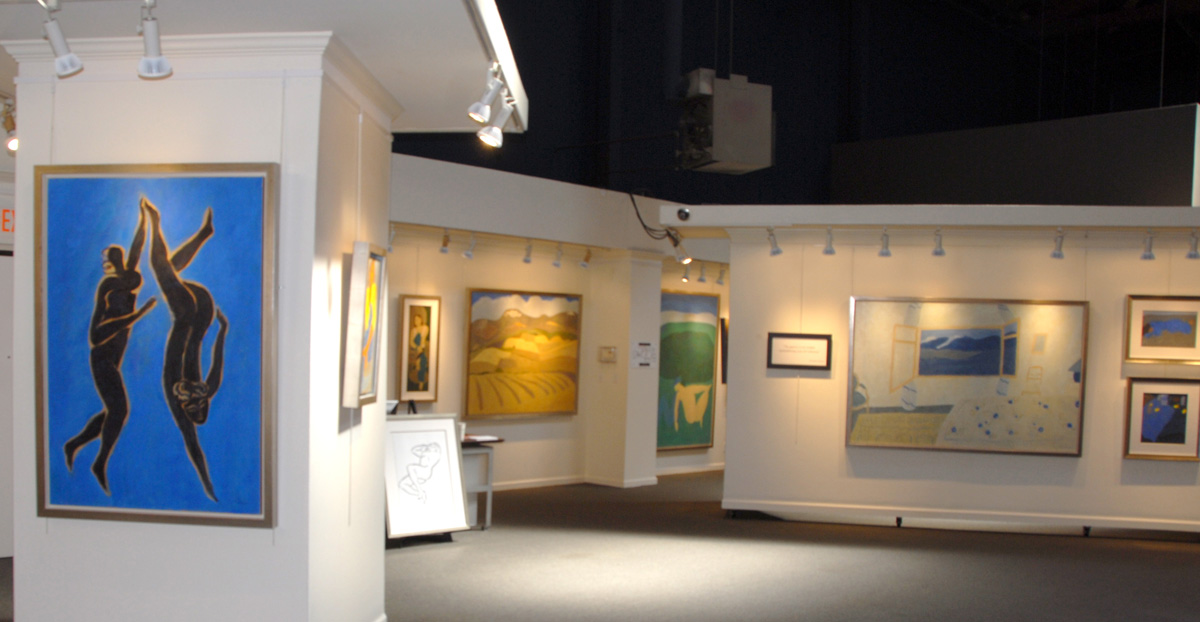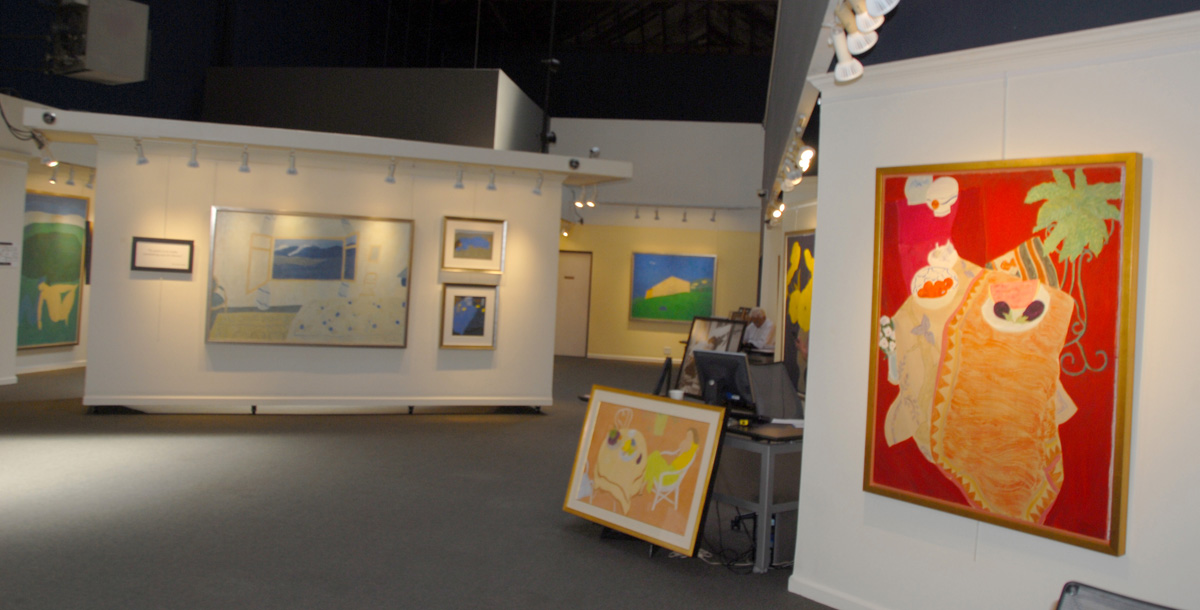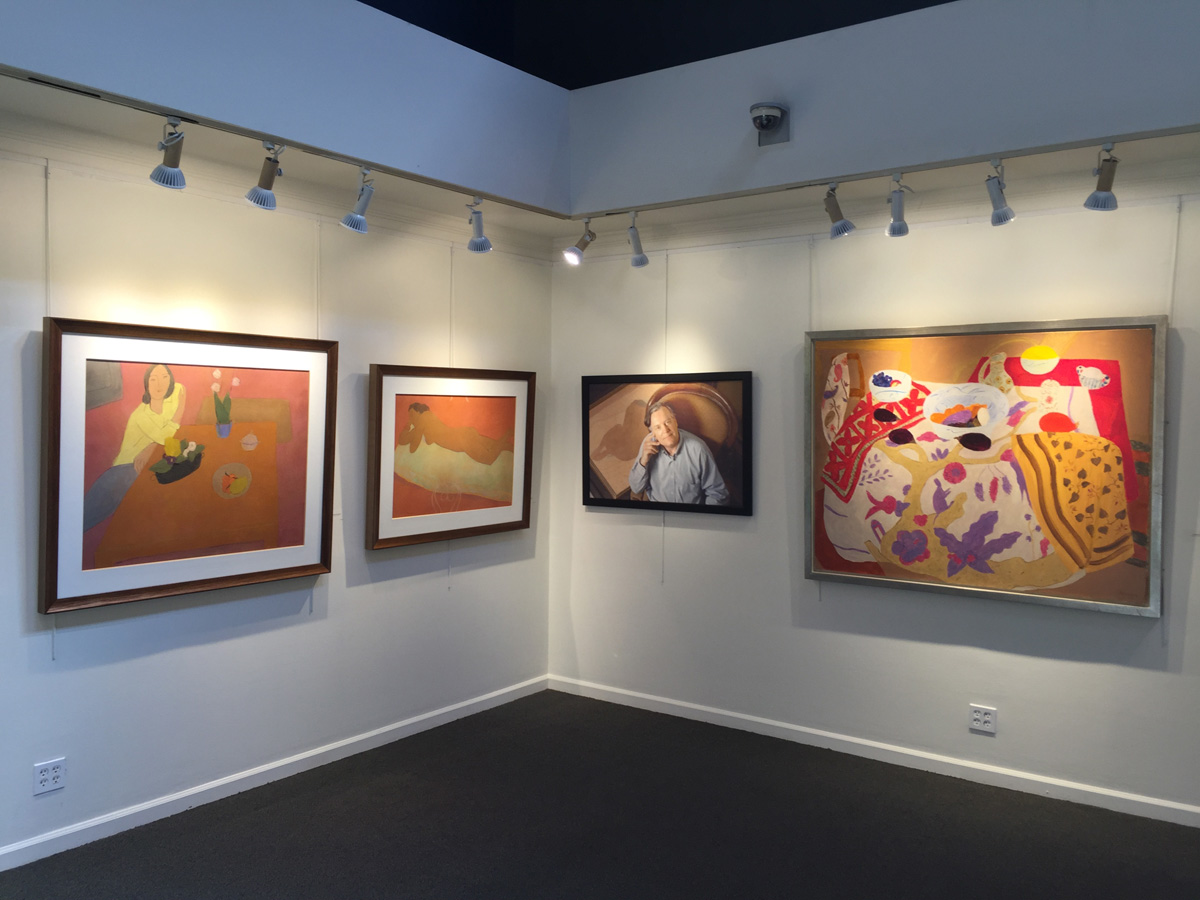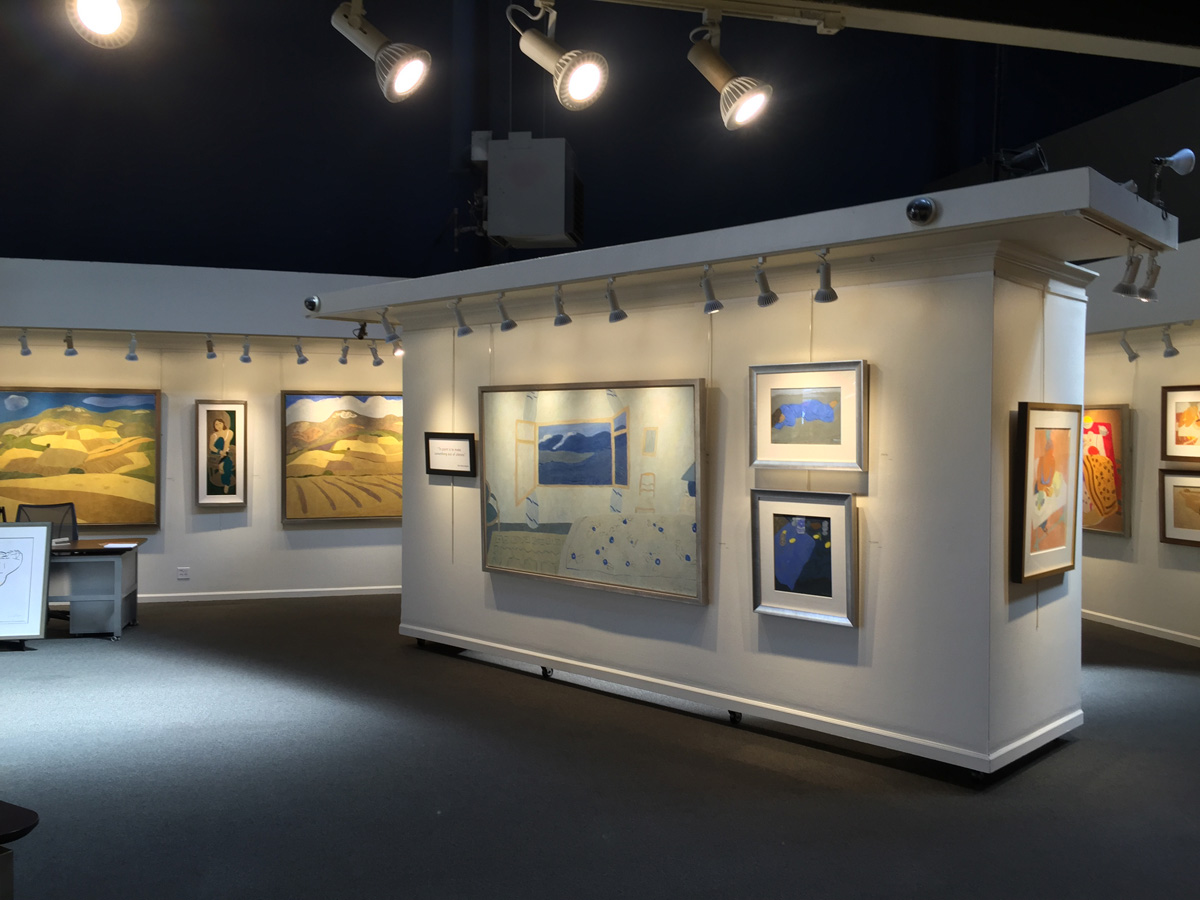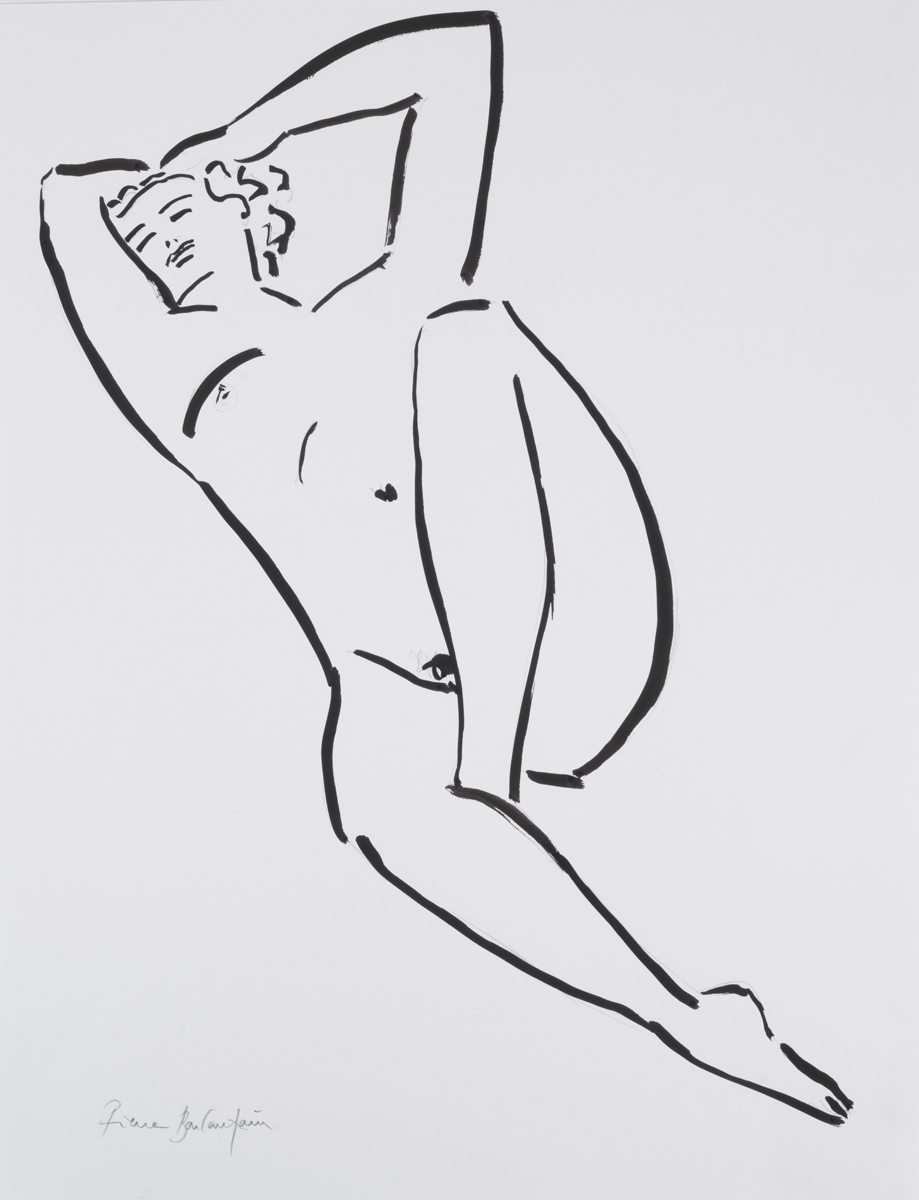SEPTEMBER 2016 EXHIBITION
New York / San Francisco
BONCOMPAIN "Floating Worlds"
"All types of subjects have their nobility, but I do not know why when I paint a nude it seems to me I touch something more intimate that connects me to all humanity."
~Pierre Boncompain
ABOUT THE EXHIBITION
The artist's studio
The work of Pierre Boncompain refers to this world without actually being of it. Rendered in saturated colors that border on the hallucinatory, comprising flat planes layered to create relatively shallow spaces, Boncompain’s painted worlds are legible yet uninhabitable, except by his lithe, sylphic figures. In spite of the presence of these human figures, abstraction is never far away: the artist’s penchant for unmodulated passages of color, combined with a distinctly graphic sensibility, produces images that only just resolve into coherent pictures. And yet he never crosses the line into pure abstraction; flat, indeterminate spaces are physically and conceptually anchored by bodies, floating or in repose. In the face of frequent shifts in fortune for figurative painting in the art world over the last half-century,Boncompain’s commitment to representation, particularly of the human figure, has remained steadfast. Indeed, some measure of public taste for figurative art has always endured, as we rarely tire of seeing ourselves depicted, investigated, distorted, and, ultimately, revealed, at the hands of the artist. Boncompain explains the unrivaled significance of the body in the history of art: “Since the Venus of Lespugue or Cycladic Art until Brancusi and Giacometti, the history of important sculpture has celebrated the human body. It is the mirror along the path; without art, what would man know of himself?” Indeed, notwithstanding any given generations’ desire to invent new forms in art, the body never ceases to be a site of shared humanity. Moreover, Boncompain’s practice is, at base, a tactile one— the attentive viewer can often find traces of the artist’s brushwork on the painted surface where the oil is densely layered, or one can see where pastel lines have been blurred and softened by the artist’s hand. While the locus of Boncompain’s practice is in painting, he also works in ceramic and tapestry, which are particularly tangible media. I would add that this humanistic aim in art—with regard to representations of the body and an attention to surface tactility—feels important, even urgent, in an era when the pace of technological progress is ever quickening. Bearing witness to the development of new technologies that rapidly change our environments naturally produces a contrary desire to return to the body and explore the self, countering feelings of smallness and insignificance. In Boncompain’s work, we find respite from an accelerated world; instead we encounter spaces that are by turn meditative and celebratory of life’s simple pleasures.
Paula Burleigh
New York-based Art Historian and frequent lecturer at the Whitney Museum of American Art.
(to read the complete essay, view our catalog below)




